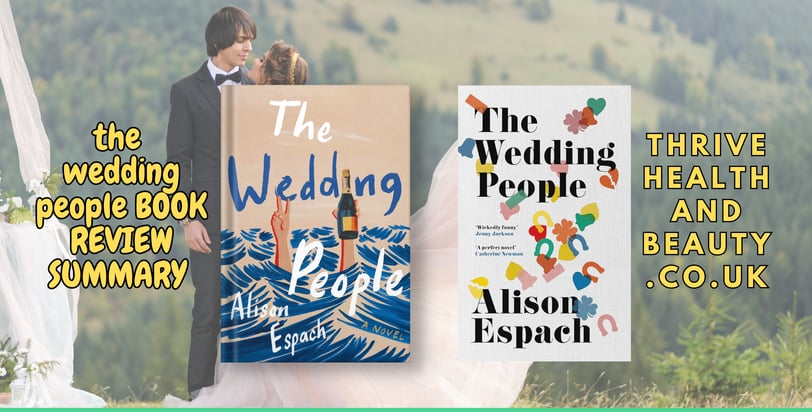A Comprehensive Review of 'The Wedding People': A Journey Through Love and Tradition
Introduction to 'The Wedding People'
'The Wedding People' is a novel that intricately weaves together the themes of love, tradition, and the complexities of human relationships, set against a backdrop of vibrant cultural rites. The narrative revolves around a group of individuals, each contributing their distinctive perspectives on the societal expectations surrounding matrimony. At the heart of the book lies the emotional experience of weddings, exploring both the joyous celebrations and the deeper vulnerabilities that accompany them.
The author, whose background is richly rooted in cultural studies and literature, draws from personal experiences and observations, providing authenticity to the narrative. Their intention in writing 'The Wedding People' stems from a desire to capture the essence of modern relationships amidst age-old traditions. This duality creates a narrative that resonates with readers from various walks of life, prompting reflections on love and the rituals that sanctify it.
The key characters in this story encompass a diverse cast, each reflecting different facets of love and commitment. From the anxious bride-to-be navigating family expectations to the skeptical friend questioning the institution of marriage, these characters engage in meaningful dialogues that challenge traditional notions while celebrating individuality. As the plot unfolds, readers are immersed in a world that juxtaposes the splendor of weddings with the intricate emotional landscapes of its participants.
The setting of 'The Wedding People' plays a crucial role in shaping the narrative, richly described with vivid imagery that transports readers to picturesque venues adorned with floral arrangements and adorned in festive colors. The book's atmosphere evokes the excitement and tension that come with planning such significant life events, providing an evocative backdrop for the characters' journeys.
With its multifaceted approach to the topic of weddings, 'The Wedding People' invites readers to engage with the nuanced realities of love and tradition as they embark on a heartfelt journey through the text.
Themes Explored in the Book
'The Wedding People' intricately weaves various themes that resonate with the complexities of human relationships, especially regarding love, commitment, and societal expectations. One of the primary themes is love, which is portrayed not merely as a romantic notion but as a multi-faceted emotion encompassing friendship, loyalty, and familial bonds. The characters navigate through different manifestations of love, reflecting the myriad ways in which it can influence decisions and interactions throughout their lives.
Commitment serves as a critical focal point in the narrative, highlighting the challenges that come with maintaining long-term relationships amidst societal pressures. The author uses characters' experiences to delve into the nuances of commitment, illustrating how insecurities and aspirations can shape the choices individuals make. This theme raises crucial discussions on the nature of obligation versus desire, prompting readers to reflect on their own relationships and the weight of commitment in their lives.
Familial expectations also play a significant role in shaping the characters' journeys. The storyline delves into the impact of parental influence and societal norms on individual choices, underscoring the struggle between personal happiness and duty to one’s family. Through poignant character arcs, the author sheds light on the delicate balance individuals often try to achieve in honoring tradition while pursuing their own aspirations.
Additionally, cultural traditions are explored as a vital theme that underscores the significance of heritage in shaping identities. The author’s portrayal of these rituals not only deepens character development but also presents a mirror for readers to examine their own cultural contexts. 'The Wedding People' ultimately invites audiences to consider how love, commitment, familial expectations, and cultural traditions interweave to create the rich tapestry of human connection, encouraging a profound reflection on these essential aspects of life.
Character Development and Relationships
In 'The Wedding People,' character development plays a pivotal role in illustrating the intricacies of love and tradition. The narrative weaves together the lives of several main characters, each embarking on their personal journeys. Central to the story is Emma, a bride-to-be who grapples with the expectations of her family while seeking to honor her own desires. Her evolution from a hesitant participant in her wedding planning to a decisive figure underscores the theme of self-discovery against the backdrop of societal norms.
Alongside Emma is Liam, her fiancé, who represents a contrasting perspective. Initially portrayed as the laid-back groom, Liam undergoes significant growth as he confronts his own fears about commitment and the meaning of marriage. His relationship with Emma challenges him to articulate his emotions, thus enriching his character arc. Together, they navigate hurdles such as familial pressures and personal doubts, showcasing the complexity of modern relationships in the context of traditions surrounding weddings.
Moreover, the cast includes Emma’s mother, a traditionalist who embodies the generational clash often seen in wedding narratives. Her insistence on adhering to family customs presents a conflict that compels Emma to redefine her own values. Through dynamic interactions, the characters shed light on the wider social implications of love, revealing how traditional expectations can influence personal choices. As these relationships unfold, they provide insight into the nuanced emotions that accompany life’s significant milestones, particularly weddings.
In examining these character arcs and relationships, the story emphasizes the profound connections that individuals form during pivotal life events. Each character's journey enriches the overall narrative, illustrating how love and tradition can coexist, often resulting in both tension and growth.
Conclusion and Personal Reflection
In examining 'The Wedding People', the reader is invited into a mosaic of love stories that are deeply rooted in cultural traditions. The author's approach not only paints a vivid picture of various wedding customs but also encapsulates the sentiments associated with each narrative. The strong character development and the exploration of emotions resonate throughout the book, making it an engaging read for anyone interested in the dynamics of love and commitment. The focus on diverse marriage rituals illustrates the universality of love while acknowledging its unique expressions across different cultures.
One of the key takeaways from 'The Wedding People' is the intricate connection between love and tradition. The author successfully captures how these two elements influence each other, transcending time and social boundaries. Readers may find themselves reflecting on their own experiences with love, potentially evaluating the role tradition plays in their lives. Additionally, the book prompts a deeper appreciation for the rich tapestry of human connection that weddings represent.
On a personal note, my experience with 'The Wedding People' was enriching. The stories engraved in its pages resonated with me on multiple levels, evoking feelings of nostalgia for family gatherings and rituals. The author’s ability to evoke such emotions speaks volumes about the purposeful crafting of the narratives. Each tale not only entertains but also conveys important life lessons about relationships, understanding, and empathy. This work encourages readers to appreciate their own traditions while also contemplating the broader human experience shared across cultures.
Ultimately, 'The Wedding People' serves as an invitation to celebrate love in all its forms. It encourages dialogue surrounding the relevant themes of marital traditions and emotional connections, making it a significant read in today’s context where love often seeks to break traditional barriers.


